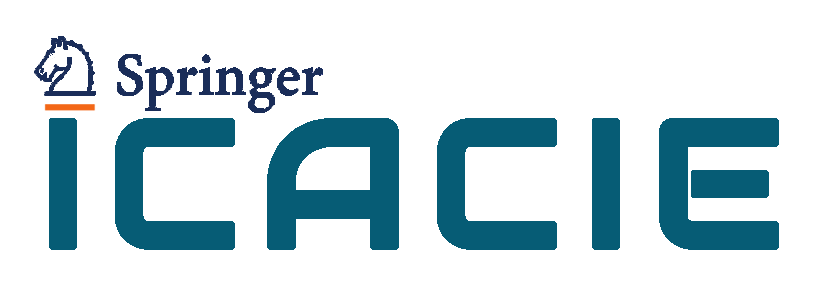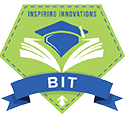Author Guidelines
Step A: Manuscript Preparation
- The manuscript should be prepared in Springer Lecture Notes in Networks and Systems (LNNS) format using MS WORD template [download] and/or LaTeX template [download]. The guidelines are given [download] which may help you to prepare the manuscript. Preferable format of the manuscript is LaTeX. These templates and guidelines can also be found on the publisher’s homepage by clicking on the ‘Instructions for Authors’ section.
- The figures/graphs/plots in the manuscript MUST be of good resolution (600 dpi or more), tables MUST NOT be in pictorial format. Text in figures should not be too small, and preferably of equal size as the text of the article.
- Figures, text, or tables MUST be visible within the boundary of the page’s text area and MUST NOT go beyond it.
- Do NOT use any Social / Academic titles (e.g. Mr., Ms., Dr., Prof., etc) preceding the author’s names. Do NOT mention the position of a person (e.g., research scholar, student, assistant professor, professor, IEEE member, IEEE student member, etc.) in the affiliation.
- Mention full address, affiliation, and email of ALL authors; specify a corresponding author with the corresponding e-mail ID. [Once an article is accepted, the publisher will send the proofreading of the article to this e-mail]
- Do not make any page numbering and do not give any running head title.
- Every article must bear a self-composed independent single paragraph as Abstract, which MUST NOT bear any citation or reference. Abstract MUST not have a section number.
- Articles must be written in spell-checked and grammatically correct English.
- All references, figures, and tables should be numbered in sequence starting from 1 and MUST be duly cited/referred to within the text.
- Adhere to page size (A4 : 8.27″ x 11.69″), page margin size (top:2.05″, bottom:2.05″, left/inside: 1.73″, right/outside: 1.73″), line spacing ( ‘single’ ), and font style ( ‘Times’ ), font sizes (Title: 14pt – bold, Abstract: 9 pt, Keywords: 9 pt, Section header : 12 pt – bold, Subsection header: 10 pt – bold, Table and figure caption: 10 pt – bold, Text body: 10 pt) as prescribed in Springer LNNS template, do not manually alter ANY of these parameters.
- Verify the referencing style of LNNS, which will help to produce the correct reference format. A reference should bear the following parameters in proper format: author name(s), the title of article/book, conference/journal name, volume, issue, page numbers, and publication year.
- Any article, not in format, will be subjected to rejection without any judgment on its quality.
- The articles should be the own work of the authors. The proper acknowledgment should be given if any work is referred from others (or some other work by the author). Plagiarism of any type, if detected, will lead to rejection of the articles anytime.
Step B: Submitting for Review
- Follow the link here and submit your article with properly mentioning the article title, authors’ names, and other details that will be asked.
- Create/sign up for an Easychair account if you do not have one.
- Fill proper metadata of the article in Easychair as they exist in your article. Title, Abstract, Keywords, list of authors (in order), and their affiliation should be mentioned in Easychair while submitting.
- You will be assigned a unique article ID of your submitted article, which you should remember and use for any correspondence.
- The page size of an article should not exceed 14 in any case. Desired page size is a minimum of 8.
- You need not upload editable source files (.doc or .docx or LaTeX files) for review. Submit single PDF files only. If your article is selected, you will later be asked for the source files.
- Review decisions will be e-mailed to the authors.
- No offline submission request through e-mail or surface mail will be entertained. Offline submissions will lead to outright rejection without any review or validating the quality of the article.
Note: DO NOT submit multiple copies of the same article, which will cause rejection. Any revision / uploading a new version/updating author information can be done on submission through Easychair.
Step C: After Acceptance
- Preparing and uploading of the Camera-Ready Article: The final camera-ready copy of the papers must be in Springer LNNS format with a length of a maximum of 14 pages. Over-length charges will apply for each extra page beyond 10 pages. However, it is desired that the maximum number of pages in an article should not exceed 14 pages in any circumstance. Check Step A: Manuscript preparation above for formatting the camera-ready article. Upload camera-ready PDF onto the Easychair, and submit source file(s) along with items mentioned in Section e (below) as .zip or .rar file.
- Paying Registration Fee: Calculate the registration fee according to your page length and type of authorship as directed on the REGISTRATION page and make payment using Foreign Telegraphic Transfer or Direct Transfer or NEFT Transfer or Wire transfer (preferable) or demand draft. Do not forget to keep the pay-in-slip or Challan or online payment receipt. You need the scanned copy of it or a scan of the DD to complete the next steps.
- Filling up of the Registration Form, which can be found in MS WORD format [Download] or in PDF. format [Download]
- Filling up of the Consent to Publish Form, which can directly be downloaded from here [Download]
- Mailing the following items in a single .zip / .rar format to icacie2021@gmail.com
- The Camera-ready Article source files, preferably in MS Word format
- Scanned copy of filled-in Registration Form.
- Scanned copy of filled in Consent to Publish Form.
- Proof of studentship (valid on 30-JULY-2021) for availing of Student Registration (if applicable) signed by the head of the department/course coordinator/registrar/director/principal.
- Scan of registration fee pay-in-slip/voucher of online transfer/DD payable to ICACIE ( whichever applicable ).
The mail must bear the subject line as: “Registration of article ICACIE2021-XXX”. [Where XXX is the paper id]
(A SINGLE MAIL must bear all items below. If size exceeds 20 MB, break the mail into more than one. Append to subject line of the mails: Part 1, Part 2, etc. Multiple mails without size limitation will not be considered.)
- Submission of original demand draft by above-mentioned registration deadlines.
YOU NEED NOT POST ANYTHING IF YOU HAVE NOT MADE PAYMENT. ICACIE WILL NOT BE RESPONSIBLE FOR ANY POSTAL DELAY OR FAILURE IN RECEIVING THE DOCUMENTS BY THE DEADLINES
Step D: Presentation Preparation
An electronic presentation facility will be available and presentation time is limited to 10 minutes including the question and answer session. The presentation should be crisp to clearly bring out the objective of the research and its outcomes along with its importance and applications if any. The PPT must adhere to the template given here[Download].
The number of slides should be 10 (must not be beyond 12).
Presentation slides must be mailed to icacie2021@gmail.com on or before 30-Nov-2021.
The mail MUST bear a subject line “Presentation slide of article ICACIE2021-XXX”
Recommendation for extending works for special issues will be on the basis of the value of the work as well as the presentation.
Paper Submission
All submitted papers will be checked for plagiarism through the Turnitin software. Papers with significant overlap with the author’s own papers or other papers will be rejected without review.
All papers that conform to submission guidelines will be peer-reviewed and evaluated based on originality, technical and/or research content/depth, correctness, relevance to conference, contributions, and readability. Acceptance of papers will be communicated to authors by email. The authors of the accepted papers will be allowed to make corrections in accordance with the suggestions of the reviewers and submit final camera-ready papers within the stipulated deadline. The conference proceedings will be distributed amongst the participants during the conference.

